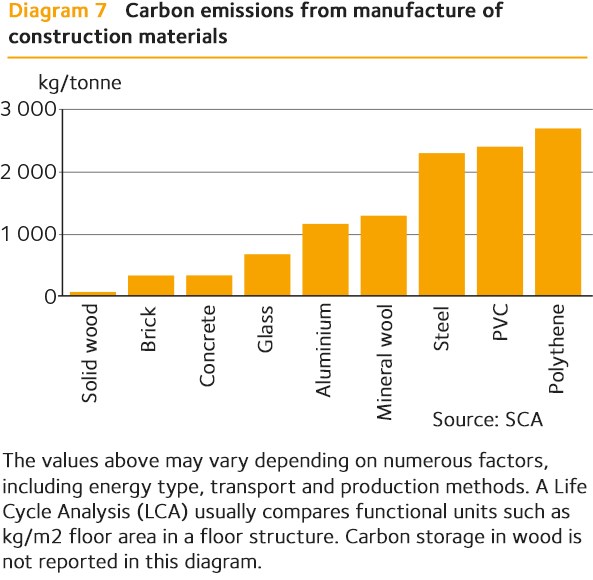Wood on the other hand actually captures carbon at least during the time when it s part of a living tree as a tree s leaves suck in co 2 during photosynthesis.
Carbon emission to make a sheet of wood.
As trees grow they absorb carbon dioxide co 2 from the atmosphere release the oxygen o 2 and incorporate the carbon into their wood leaves or needles roots and surrounding soil.
Carbon sequestration the fiber used to make our products is sourced from responsibly managed forests which provide carbon benefits through carbon sequestration.
In the ghg protocol ghg emissions from forestry extraction the production of purchased wood fuels and the transportation of raw materials accounted for 13 14 of the total ghg emissions.
Forests store carbon dioxide while providing wood fiber for paper based products.
Once trapped inside the wood all.
Similarly when people install wood floors instead of vinyl flooring carbon emissions can be as much as 20 times lower.
These two effects substitution and sequestration are why the carbon impact of wood products is favorable.
The manufacture of wood products requires less fossil fuel than nonwood alternative building materials such as concrete metals or plastics.
By nature wood is composed of carbon that is captured.
The european union is already relying on burning wood as a carbon neutral energy source to meet paris accord emission goals.
One of three things then happens.
And one of the big arguments used to support this switch to wood is.
By nature wood is composed of carbon that is captured from the atmosphere during tree growth.
For instance buildings framed in wood pdf 189 kb release 26 percent less carbon than steel framed buildings and 31 percent less than concrete framed buildings.
As part of photosynthesis trees take in carbon dioxide.
Although wood provides fuels from neutral carbon in this study the ghg emissions from the production of these materials were included.
1m 3 of the product has a global warming potential of 655 kg co 2 e because large quantities of biogenic carbon are stored in the wood raw material.
Furthermore the wood used by metsä wood always comes from sustainably managed forests.
Using wood reduces the carbon footprint of buildings in two key ways through carbon storage and avoided greenhouse gas emissions.
The carbon footprint of kerto lvl laminated veneet lumber is actually negative.





























